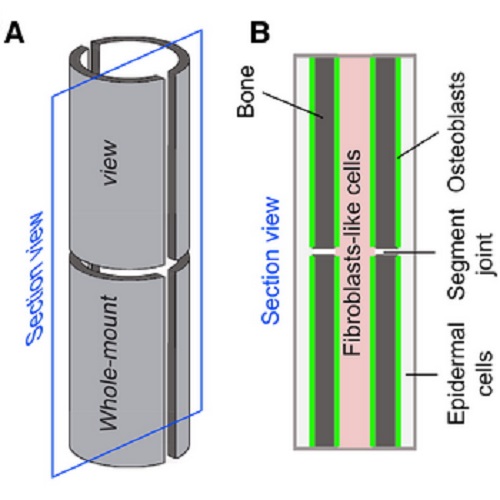Bone regenerates via dedifferentiation of osteoblasts in the zebrafish fin.
While mammals have a limited capacity to repair bone defects, zebrafish can completely regenerate amputated bony structures of their fins. Fin regeneration is dependent on formation of a blastema, a progenitor cell pool accumulating at the amputation plane. It is unclear which cells the blastema is derived from, whether it forms by dedifferentiation of mature cells, and whether blastema cells are multipotent. We show that mature osteoblasts dedifferentiate and form part of the blastema. Osteoblasts downregulate expression of intermediate and late bone differentiation markers and induce genes expressed by bone progenitors. Dedifferentiated osteoblasts proliferate in a FGF-dependent manner and migrate to form part of the blastema. Genetic fate mapping shows that osteoblasts only give rise to osteoblasts in the regenerate, indicating that dedifferentiation is not associated with the attainment of multipotency. Thus, bone can regenerate from mature osteoblasts via dedifferentiation, a finding with potential implications for human bone repair.

- Dev. Cell 2011 May 17;20(5):713-24
- 2011
- Developmental Biology
- 21571227
- PubMed
Enabled by:
